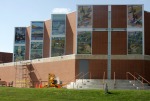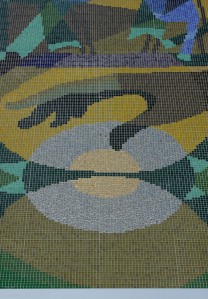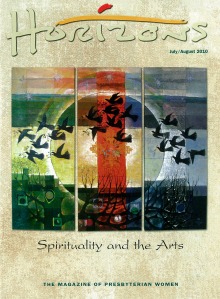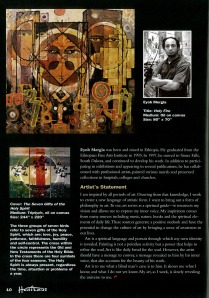Several elements were in my mind as I worked on this piece. I wanted to include: future, diversity, innovation, evolution, vision, imagination and creativity. These elements are the fundamentals of humanity and culture which help shape mankind’s destiny.
This exhibition is now the second collaboration between Ron Robinson and me. It has been a really good experience, and I’m looking forward to working with him on similar projects in the future. You can read more of Ron's work here. Hopefully, that would be an art that idealistically expresses the spirit of the Dakotas - an art that represents everyone.
Below is a beautiful poem Ron Robinson wrote as part of our collaboration to express the idea in both words and painting.
Dakota Moment
We are met at these crossroads of time,
ascended from the stairs of the double spiral
or descended from the galaxy of stars,
onto these plains where once great herds of bison
fled the arrows of He-Whose-Horse-Is-Crazy,
where mountains bear the likeness of our faces.
Who were they, so proud they carved their faces
into stone, as though in this to conquer time?
To seek permanence in this endless flux is crazy,
after all; stone crumbles, and words spiral
like leaves or birds in autumn winds, as bison
stir in fear of wolves that howl the stars.
This world is not ours, we who from the stars
were fashioned, whose sins are written in our faces,
whose existence is as fragile as the bison
we once brought near extinction, who in time
will be extinct, whose fortunes too will spiral
downward, and whose greed will drive us crazy.
What are we met to do in this crazy
world but seek to emulate our stars
whose talents bring them fame, who spiral
to obscurity, and whose faces
haunt us, so much like our own in time,
as though to warn us of our fate: like bison
to flourish for a little while, like bison
to be brought low? Is it truly crazy
to think there must be something else, that time
was given us to use, to regain the stars,
to reclaim our righteousness, to redeem our faces,
before we face the greater, final spiral?
But what can atone, what reverse the spiral?
Our fathers have transgressed against the bison,
against the earth, have set their very faces
one against the other, stolen Crazy
Horse, their heroes and their foes, their stars,
as mere attractions, have sold their own brief time.
Now give us kinder faces to climb the double spiral
up the steps of time, let flourish men and bison.
Though now it may seem crazy, we meet next in the stars.
–Ronald Robinson













